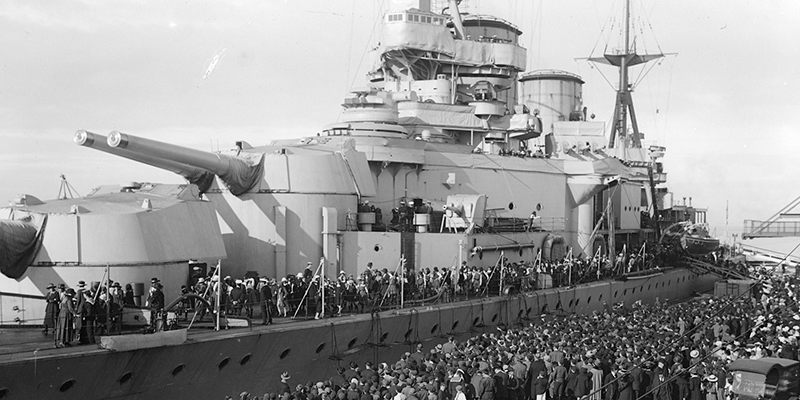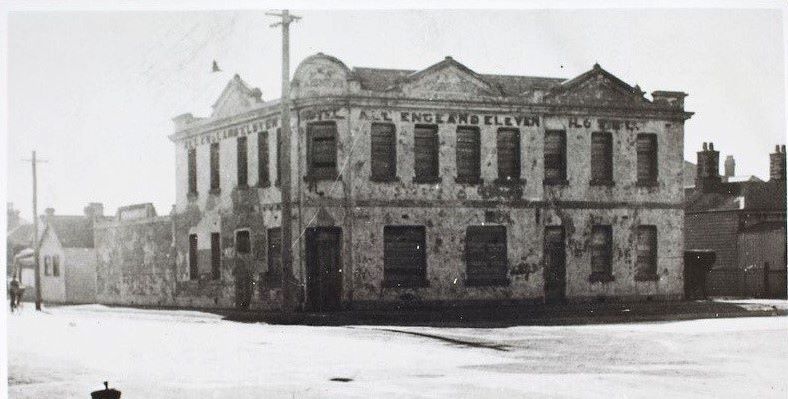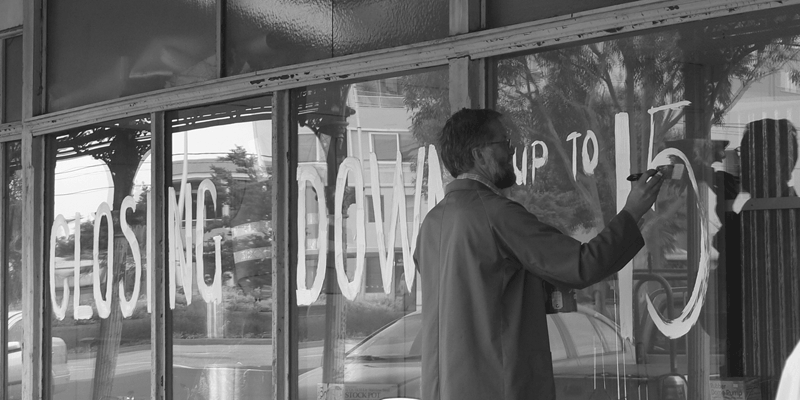Now and Then 2021 – Corner Bay and Spring Streets
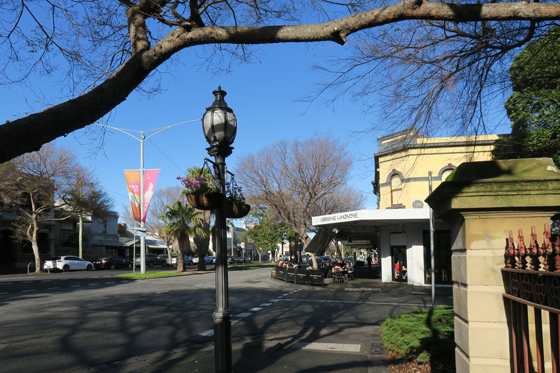
Bay Street has always been both a route and a destination. Vehicles now, as then, travel north and south, but in 1840 it was no more than a dusty track leading to Melbourne.
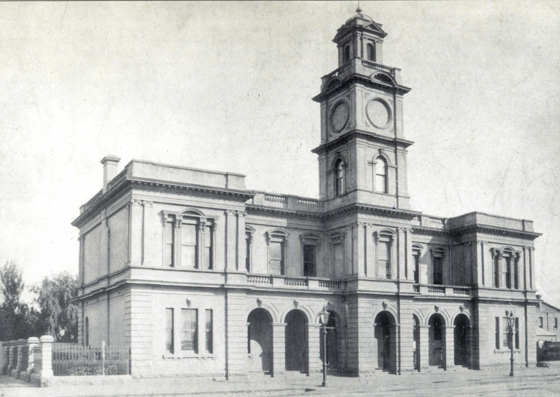
By 1900 it was a broad thoroughfare lined with buildings of widely varying quality and use. The main Town Hall building has stood since 1883 relatively unchanged apart from the addition of a clock in the tower. The photograph above shows the building when it was first built before the clock was installed.
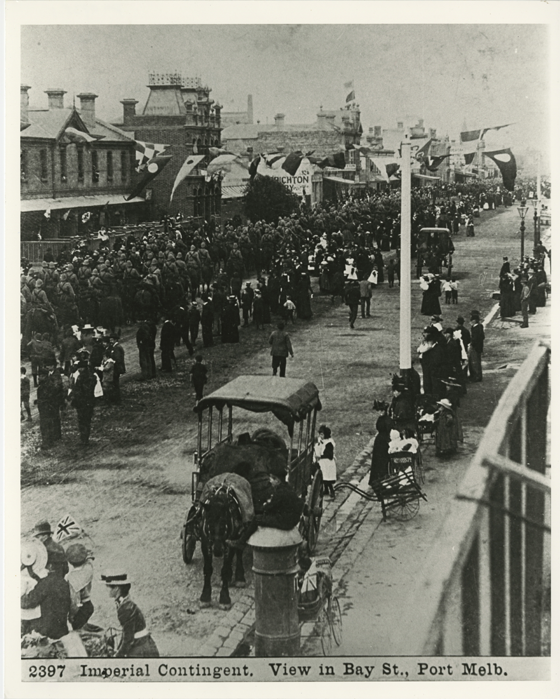
The Boer War in South Africa was strongly supported in Australia and an army contingent was sent from Australia to assist the British Army. They marched down Bay Street to embark for Cape Town. This photo was taken from outside the Town Hall where an excited crowd cheered them on. There appears to be road work in the photo and it has been speculated that this was for the laying of the cables for the trams that was undertaken in that year.
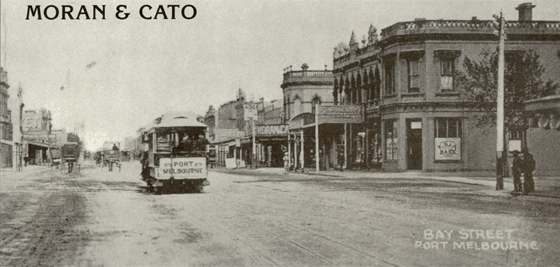
One of the first independent acts of the new Commonwealth of Australia was to invite the United States of America to send their Great White Fleet on an official visit in 1908. The ships were anchored in Hobson’s Bay. It was estimated that 30,000 people lined up to see the sailors march along Bay Street and City Road into Melbourne.
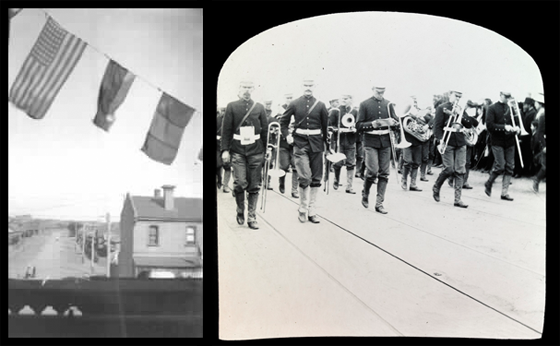
By 1909, Mr J Bradley was regularly presenting picture concerts at the Town Hall.
Bradley’s Pictures
The Standard, 25 September 1909, p. 3
A very good programme is prepared for the concert at the Town Hall tonight, under the direction of Mr J. Bradley.
The leading picture will be ‘The Street Waif‘. In this a poor girl is depicted shivering with cold. She seeks warmth in a tavern. An Apache Indian approaches her, but a companion of the girl interferes, when the Apache strikes her and pushes the girl out in to the snowstorm. She sinks to the ground and collapses. A young man approaches in a motor car and conveys the girl to his home. The girl soon adapts herself to her surroundings, and becomes an accomplished musician. An attempt at blackmail by an old companion causes her to determine to go away, but the young man who rescued her has learned to love her, and will allow nothing to separate them.
Other good pictures will be shown, and songs will be sung by Miss Amy Anderson (her first appearance at these concerts) and Mr F. Harcourt.
Opposite the popular breakfast café Hurricane Handsome is this imposing Italinate style mansion. It was built in the late nineteenth century for Dr George Cuscaden. He was Medical Officer of the City of Port Melbourne and a strong advocate of better housing for working class people, recommending that a number of sub-standard houses be demolished. In 1905 he built a terrace of cottages in Farrell Street to replace the notorious houses owned by Jane Slaven. Along with other municipal medical officers he advocated for compulsory herd testing in order to reduce the risk of tuberculosis from infected milk.
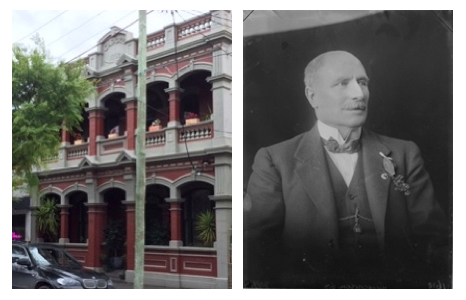
After World War I he was honoured for organising the response to the Spanish Flu pandemic.
This article is based on one of the panels that formed the Now and Then Exhibition of the Port Melbourne Historical & Preservation Society in 2021. The original panel can be seen here.

